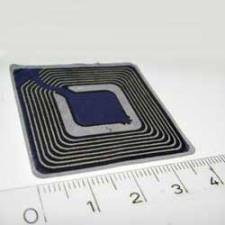Methodology
Carrying out medical device evaluations on devices that are currently in use for capital bids projects, or new building, should be done in such a way that evidence can be produced to show the device should either be replaced, transferred, upgraded, or taken out of service.
The methodology for carrying out such a survey should be clear to the user, and the customer, who may be the Director of finance, or someone else within the Trust responsible for ensuring best use of capital funds.
The first thing to do when carrying out an evaluation is to ensure all the details of the main equipment and any ancillary items are correctly recorded. This means using a form, such as: the EBME device evaluation form, and later transferring the information into your report.
The information required must include an individual Reference identifier for the evaluation form. This will enable trace-ability as part of your quality management system. The Date of the evaluation is also important, as it relates directly to the Age of device.
The device details should be recorded as accurately as possible so, if the need arises, the manufacturer can be contacted to gain further supporting evidence for the evaluation. These details should include the generic Device title, Make, Model, Serial number and Asset number.
Supplier and Manufacturer information
The Supplier of the equipment needs to be listed and also the Manufacturer (where the manufacturer is different to the supplier). It may be necessary to contact the supplier for information, and it is therefore worthwhile recording the Supplier contact (name) and Telephone number.
Sometimes overlooked is the importance of Supplier user support and Supplier technical support. Does the supplier offer these services when you purchase the device, and how long are they willing to continue supporting the device? When something goes wrong, you may need their help, so it is vital that you check BEFORE to enable a decision to be made on suitability for clinical use.
As part of this exercise, it is also important to ascertain the Supplier recommended life of the equipment, to enable the assessor to ascertain Continued life expectancy. Other details that can be obtained from the supplier will enable the assessor to look at life costs for things such as Current annual service and maintenance costs, Consumable costs, Accessories costs, Cost of upgrade (if applicable), Purchase price for replacement, and the cost of maintenance. This may not be considered by the clinician or nurse requesting the new device, but as an evaluator, it may impact in a negative way on Trust revenue funds, if these costs are not considered. It will also help the person making the financial decision on whether or not a device should be purchased.
Capital Replacement considerations
When making decisions on how best to use the Trusts Capital Funds for medical device replacement, consideration should also be given to the Physical condition, and whether or not the equipment being replaced has a User guide. If equipment is in poor condition or not used, it may require maintenance to enable its life to be extended, or the user may not be able to use the device due to lack of training, or information.
When looking at maintenance costs, these may be reduced if the equipment has a long Warranty period, and this should be a factor in the decision making.
Is the device Suitable for intended the use?
(Performance) The device must meet current and future needs of the department. It may be that even though it has not reached the end of its recommended lifecycle, it no longer meets the clinical needs. These issues need to be confirmed by discussing usage and patient throughput with the user. It is vital that the Equipment meets proposed activity.
When considering purchase of new equipment it is important to consider the Reason for purchase or transfer, and that the Department has the correct services for the equipment. I.e. Suitable electrical supplies, vacuum, water, extraction, etc for correct operation of the equipment.
Installation costs and Miscellaneous Transfer overheads
Installation of radiology equipment is expensive. These costs, and the costs of IT equipment, injectors, workstations, etc must all be considered. This is especially important if you are considering relocation of equipment. The capital residual value should be greater than the associated transfer costs. It may be more sensible to recommend the procurement of new equipment.
Parts, and service manual available?
The assessor must be able to determine ability to service the equipment. This is important for in-house EBME departments who carry out their own planned maintenance and repairs.
Reliability of current device
The user should always be consulted when carrying out an appraisal. They will give the assessor valuable information as to reliability, costs, and confidence in the supplier. If the EBME Dept does not have the service information it is usually held by the user.
Regulations
In some cases the equipment may not meet the current statutory and NHS regulations for medical devices. It is important to check for CE classification. Does it meet the Medical Devices Directive MDD93/42 statutory requirements? Does it bear the correct CE mark? CE marking can be carried out for electromagnetic compatibility, but this does not mean it is suitable for medical use. (The assessor should understand the relevant regulations to be able to make an informed evaluation).
If it does bear the correct Medical Devices Directive approval, what evidence is there of it having been tested by an approved testing house? For class 1 (Low risk), Class 2a and 2b (Medium risk), and class 3, they should all have a four digit identifier code which relates to the approved testing house.( For example, '0086' under the CE conformity mark indicates that the British Standards Institute carried out the testing) . Class 1 devices (usually self certified) should still have registration with a notified body such as the MDA and a certificate can be requested.
IEC601 Classification is the regulation that relates directly to the electrical safety of the device. Some devices may be purchased which are manufactured for industrial use. Examples are light sources and videoscopes. When equipment is being evaluated it is important that it meets statutory regulations relating to Medical devices.
Finally, The EBME department should also be consulted for their impressions of Ease of use, Ease of maintenance, and Confidence in the supplier.
Author: John Sandham IEng MIIE MIHEEM








